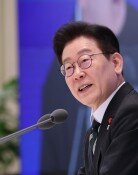How long will the healthcare crisis continue?
How long will the healthcare crisis continue?
Posted April. 06, 2024 07:51,
Updated April. 06, 2024 07:51
On Thursday, President Yoon Suk Yeol engaged in a 140-minute discussion with representatives of medical residents and interns who staged a mass departure from hospitals in protest against the expansion of medical schools, revealing entrenched differences in viewpoints. This encounter marked the first meeting held 45 days after the resident incident. The government, in response, affirmed its commitment to earnest dialogue while maintaining the policy of augmenting admissions by 2,000. However, residents advocating for the scrapping of the medical school expansion plan are now pushing for the impeachment of the representative who engaged in talks with the government, casting doubt on the continuity of negotiations.
Critics argue that a single meeting is insufficient, particularly amidst the ongoing strain on the healthcare system. The fruitless outcome of the dialogue, bereft of tangible results or a promise of future engagement, fuels despair. With an exodus of crucial residents from over 100 teaching hospitals nationwide, concerns mount among cancer patients awaiting urgent surgeries, fearing potential metastasis during prolonged waits. Since the resident incident, instances of individuals departing emergency rooms due to bed and staffing shortages have more than doubled. Regular contributors to health insurance premiums find themselves tragically stranded when in dire need of medical attention during emergencies or severe illnesses.
Teaching hospitals across the country are also seeing a deficit of around 1 billion won per day as they are not receiving enough patients. Asan Medical Center, Korea's largest cancer hospital, suffered a deficit of 51.1 billion won over the past 40 days. Each hospital is implementing unpaid leave and emergency management, but more hospitals are expected to go bankrupt starting next month. When 40 medical schools across the country, which have postponed the start of the first semester, begin classes next week, there is a possibility that 85% of medical students will repeat a grade. If the number of medical school students is increased and repeat students are added, medical school classrooms and labs will be in chaos starting next year.
The medical and doctor training systems are in an emergency situation where immediate action must be taken, so why are they trying to tussle over the issue of increasing the number of doctors that will only be effective in 10 years? The government is asking the medical community for a ‘unified alternative’ to increasing the number of medical schools. However, asking the divided medical community to develop a single plan is no different from saying that it will do as the government wants. Rather than waiting passively, the government's job is to actively collect diverse opinions from the medical community and come up with an agreement. This is not the time for doctors to be swayed by hardliners. They need to actively engage in dialogue with the government, considering the weight of their job in protecting the people's health.







